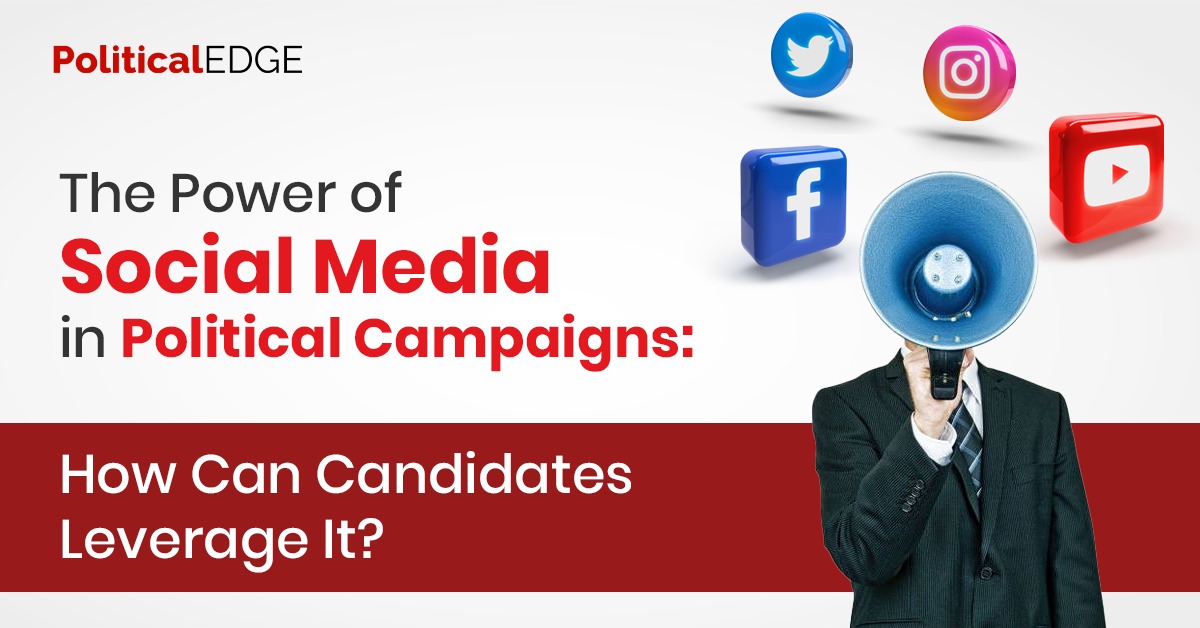
Political parties worldwide are realizing that to compete with one another, they must engage in digital marketing strategies in addition to traditional forms of advertising like television and newspapers. The use of social media campaigns by various parties, in particular, to defeat their rivals, has increased over the past several years. Political parties should understand that every campaign is unique and that digital marketing strategies and techniques are the best way to leverage a party’s campaign game.
Social media has become an indispensable tool for political candidates seeking to connect with voters, raise awareness, and ultimately win elections. The ability to reach millions of people with a single post has transformed the way campaigns are conducted. In this blog, we will explore the power of social media in political campaigns and discuss strategies that candidates can leverage to maximize their impact.
How Does Social Media Help in Smooth Political Campaigns
Building a Strong Online Presence
The first step for any political candidate looking to harness the power of social media is to establish a strong online presence. This involves creating profiles on major social media platforms such as Facebook, Twitter, Instagram, and LinkedIn. A well-constructed and informative profile can serve as a candidate’s digital resume, offering voters a glimpse into their background, qualifications, and policy positions.
Candidates should also consider creating a campaign website where they can provide more in-depth information about their platform and engage with supporters. The website should be user-friendly, mobile-responsive, and regularly updated with fresh content.
Identifying and Targeting Key Demographics
Social media platforms offer powerful tools for targeting specific demographics. Candidates can utilize these tools to identify and reach out to their key voter groups. For example, they can target ads to specific age groups, geographic regions, or even interests and behaviors. This level of precision allows candidates to ensure their message reaches the most relevant audience.
Additionally, social media analytics provide valuable insights into audience engagement. Candidates can track which posts are performing well, measure the impact of their messages, and adjust their strategies accordingly. This data-driven approach allows for continuous optimization and refinement of campaign efforts.
Engaging with Voters
One of the most significant advantages of social media is the ability to engage directly with voters. Candidates can respond to comments, answer questions, and participate in conversations about important issues. This level of accessibility humanizes candidates and fosters a sense of connection with the electorate.
Live streaming and virtual town halls have also gained popularity, allowing candidates to engage in real-time discussions with voters. These interactive events provide a platform for candidates to showcase their knowledge, address concerns, and build trust.
Crafting Compelling Content
The success of a social media campaign hinges on the quality and relevance of its content. Candidates must craft compelling and shareable content that resonates with their target audience. This can include:
- Informative Videos – Short videos explaining policy positions or showcasing campaign events can capture the attention of viewers.
- Visual Graphics – Infographics and visually appealing graphics can simplify complex issues and make information more digestible.
- Personal Stories – Sharing personal anecdotes and experiences can help candidates connect with voters on a more emotional level.
- User-Generated Content – Encouraging supporters to create and share their own content can amplify the campaign’s message.
- Engaging Polls and Surveys – Interactive content like polls and surveys can encourage voter participation and provide valuable feedback.
Utilizing Social Media Advertising
Paid advertising on social media can significantly expand a candidate’s reach. Platforms like Facebook and Instagram offer a variety of ad formats, including sponsored posts, carousel ads, and video ads. Candidates can set budgets, target specific demographics, and track the performance of their ads in real-time.
It’s important to note that while paid advertising can be effective, organic content and engagement should remain a priority. A balanced approach that combines both paid and organic strategies often yields the best results.
Managing Crisis and Controversy
In today’s hyperconnected world, candidates must be prepared to manage crises and controversies that may arise on social media. Rapid response teams and a well-defined crisis communication strategy are essential. Candidates should address issues transparently, take responsibility when necessary, and demonstrate a commitment to learning from mistakes.
Mobilizing Supporters
Social media can also serve as a powerful tool for mobilizing supporters. Candidates can use their platforms to organize volunteers, promote fundraising efforts, and encourage voter turnout. By fostering a sense of community and purpose among supporters, candidates can turn online engagement into real-world action.
Conclusion
In conclusion, the power of social media in political campaigns cannot be overstated. It has transformed the way candidates connect with voters, share their message, and mobilize support. To harness this power effectively, candidates must build a strong online presence, target key demographics, engage with voters, craft compelling content, utilize advertising, manage crises, and mobilize their supporters. By leveraging these strategies, candidates can increase their chances of success in the digital age of politics.

